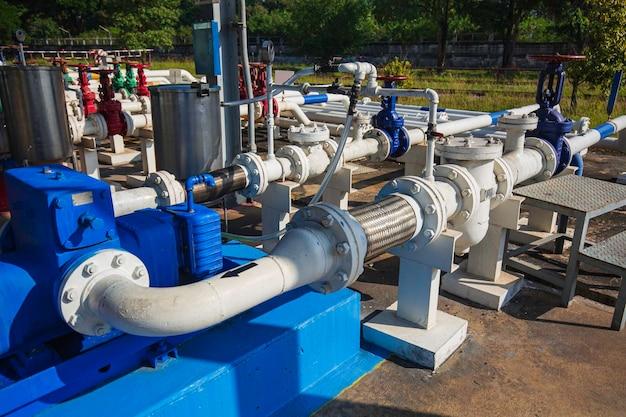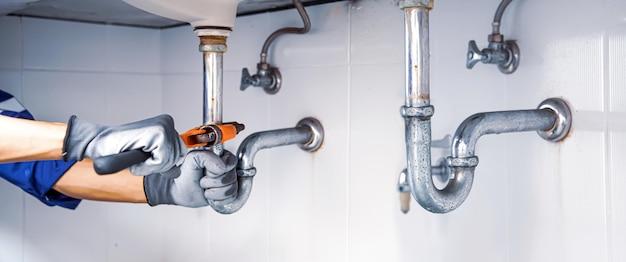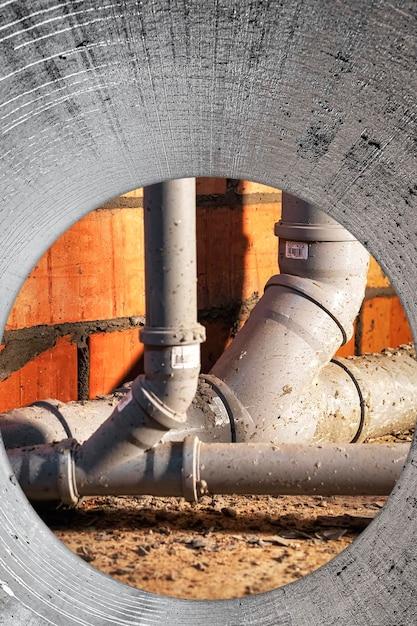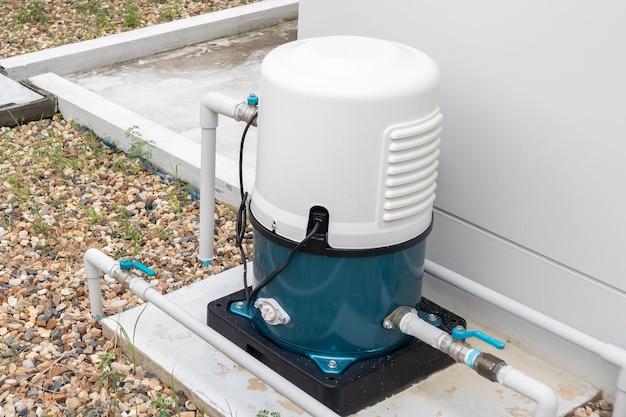Dealing with a basement sink pump that refuses to work can bring about a wave of frustration! But fret not, for we’re here to help. In this comprehensive blog, we’ll tackle the challenges associated with a non-functioning basement sink pump. From understanding how these pumps operate to troubleshooting common issues, we’ve got you covered. So grab your wrench and let’s dive in! But first, let’s explore what might be causing this hiccup.
Troubleshooting a Basement Sink Pump That Won’t Work
Is your basement sink pump acting up? No worries, we’ve got you covered!
If you’ve noticed that your basement sink pump is not working as it should, it’s essential to address the issue promptly to avoid any potential water damage or plumbing mishaps. Here are a few common problems and troubleshooting tips to help you get your basement sink pump back in working order.
1. Check the Power Supply
First things first, let’s make sure your basement sink pump is getting the power it needs. Start by verifying if the pump is properly plugged in or if a circuit breaker has tripped. Sometimes, a minor power disruption can be the cause of the problem.
2. Confirm the Float Switch is Functioning
Your basement sink pump comes equipped with a float switch that triggers the pump to turn on when water reaches a certain level. If the float switch is stuck or obstructed, the pump may not activate. Check to see if anything is interfering with the movement of the float switch and clear away any debris if necessary.
3. Inspect the Check Valve
The check valve is responsible for preventing water from flowing back into the pump once it has been pumped out. Over time, the check valve can become clogged or damaged, leading to pump malfunction. Inspect the check valve for any obstructions, such as debris or sediment, and clean or replace it if needed.
**4. Unclog the Pump}
Sometimes, owning a basement sink means dealing with the occasional clog. If your pump is not working, there’s a chance that it may be clogged with debris. Carefully remove the pump and inspect the impeller for any blockages. Clean out any debris thoroughly and ensure the impeller can spin freely.
5. Test the Pump
To confirm if your basement sink pump is working correctly, pour a bucket of water into the pump pit. The float switch should activate, and the pump should start removing the water promptly. If this doesn’t happen, it may indicate a more significant issue that requires professional assistance.
Remember, while these troubleshooting tips can help get your basement sink pump working again in many cases, some situations may call for professional attention. If you’re unsure about how to tackle the problem or if your attempts at troubleshooting have been unsuccessful, don’t hesitate to contact a licensed plumber who specializes in basement sink pump repairs.
With these handy tips, you’ll be well on your way to resolving any issues with your basement sink pump and keeping your space dry and functional. Happy plumbing!
Best Under Sink Drain Pump
Many homeowners find themselves dealing with plumbing issues, and one common problem is a basement sink pump not working. If you’re experiencing this dilemma, you may be wondering if there’s a solution to the problem that doesn’t involve costly repairs. Luckily, there is – installing the best under sink drain pump.
What is an Under Sink Drain Pump
An under sink drain pump is a compact device that helps move wastewater from sinks or other plumbing fixtures when the main drain is not easily accessible or doesn’t have enough slope for proper drainage. It’s a convenient solution for situations where gravity isn’t enough to remove the water effectively.
How Does an Under Sink Drain Pump Work
These pumps operate by receiving wastewater from the sink or fixture, grinding any solids present, and then pumping the liquid through a small-diameter pipe to the main drain or a higher outlet. The pump automatically activates when water enters the basin and shuts off once it’s pumped out, ensuring efficient and reliable drainage.
Benefits of Using an Under Sink Drain Pump
-
Easy installation: Most under sink drain pumps are designed to be easily installed without the need for extensive plumbing knowledge or professional assistance.
-
Cost-effective solution: Instead of tearing down walls or floors to access the main drain, installing an under sink drain pump is a more affordable alternative.
-
Versatility: These pumps can be used in various applications like kitchen sinks, bar sinks, laundry sinks, and even bathroom fixtures.
-
Space-saving: The compact design of under sink drain pumps allows them to fit comfortably beneath your sink without taking up too much space.
Factors to Consider when Choosing an Under Sink Drain Pump
-
Power and performance: Look for a pump with sufficient power to handle the volume and type of wastewater you’ll be dealing with.
-
Grinding capability: Ensure the pump you choose has a reliable grinding mechanism to efficiently process solids and prevent clogs.
-
Noise level: Consider the noise level of the pump, especially if your basement area is frequently used and you don’t want disruptive noises.
When facing the frustrating issue of a basement sink pump not working, installing an under sink drain pump can be a practical solution. Not only does it save you money on costly repairs, but it also offers convenience, versatility, and space-saving benefits. Take into account factors like power, grinding capability, and noise level when choosing the best under sink drain pump for your needs. By investing in this handy device, you’ll ensure efficient drainage and bid farewell to plumbing troubles in your basement.
How Does a Sink Drain Pump Work
Introduction
Having a basement sink pump is crucial for effectively removing water from your basement. However, it can be frustrating when your pump stops working. In this section, we’ll dive into the inner workings of a sink drain pump to understand how it operates.
The Anatomy of a Sink Drain Pump
A sink drain pump consists of several key components that work together seamlessly to drain water from your basement sink.
1. Electric Motor
At the heart of the pump is the electric motor. When activated, it drives the entire pumping process, converting electrical energy into mechanical energy.
2. Impeller
Connected to the electric motor, the impeller is responsible for moving the water. Its rotating blades create pressure, pushing the water through the pump and out of the drain.
3. Vortex Chamber
The vortex chamber, also known as the volute, receives the water from the impeller and provides a pathway for it to exit the pump. This chamber helps maintain a strong flow and prevents any clogging or blockages.
4. Float Switch
To prevent the pump from overflowing or running dry, a float switch is installed. It works like a mini lifeguard, monitoring the water level and activating the pump when it reaches a certain threshold. When the water recedes, the float switch turns off the pump.
5. Check Valve
To ensure water only flows in one direction, the sink drain pump is equipped with a check valve. This valve prevents backflow, where water moves back into the sink or pump, ensuring it only moves away from the designated area.
The Pumping Process
Now that we understand the various components, let’s see how a sink drain pump actually operates.
-
The electric motor turns on, powering the impeller to start spinning rapidly.
-
As the impeller rotates, it creates a force that propels the water towards the vortex chamber.
-
The water enters the vortex chamber, where it gains momentum and follows the pathway designed for efficient drainage.
-
Simultaneously, the float switch keeps a vigilant eye on the water level. Once it reaches the predetermined level, it signals the pump to activate.
-
The pump continues to operate until the water level recedes, at which point the float switch signals the pump to turn off.
Understanding how a sink drain pump works provides valuable insight into its functionality. From the electric motor to the impeller and the intricate pumping process, each component plays a vital role in keeping your basement water-free. So, the next time you encounter issues with your basement sink pump, you’ll have a better understanding of what might be causing the problem.
Why is My Sink Pump Not Working
If you’ve noticed that your basement sink pump is not working, it can be a frustrating situation. There could be several reasons why this might happen. In this section, we will explore some common issues that can cause a sink pump to stop working and provide you with possible solutions.
Power Supply Problems
One of the first things to check when your sink pump is not working is the power supply. Make sure that the pump is plugged in properly and that the outlet is functioning. Sometimes, a loose connection or a tripped circuit breaker can be the culprit. Try plugging in another device to ensure there is power to the outlet.
Float Switch Malfunction
Another common reason for a sink pump to cease functioning is a malfunctioning float switch. The float switch is responsible for turning the pump on and off based on the water level. If the switch gets stuck or becomes faulty, it can prevent the pump from operating correctly. Check the float switch to ensure it moves freely and is not obstructed. If necessary, consider replacing the switch.
Clogged or Blocked Hose
A clogged or blocked hose can also cause your sink pump to stop working. Over time, debris and sediment can accumulate in the hose, restricting water flow. Inspect the hose for any obstructions and ensure it is clear. Consider running a plumbing snake or using a pressure washer to remove any stubborn clogs.
Pump Motor Failure
In some cases, the issue may lie with the pump motor itself. Over time, motors can wear out or become damaged, resulting in a non-functioning pump. If you suspect motor failure, it is recommended to contact a professional plumber or technician. They can assess the motor and determine if it needs repair or replacement.
Lack of Maintenance
Lastly, a lack of regular maintenance can contribute to the malfunction of your sink pump. It is essential to clean and inspect the pump regularly to ensure it operates efficiently. Regular maintenance can help prevent issues and extend the lifespan of the pump. Refer to the manufacturer’s instructions for proper cleaning and maintenance procedures.
In conclusion, there are several reasons why your basement sink pump may not be working. Power supply problems, float switch malfunction, clogged hoses, pump motor failure, and a lack of maintenance can all contribute to this issue. By troubleshooting these potential problems and taking appropriate action, you can restore the functionality of your sink pump and avoid future complications.
How Do I Reset My Basement Pump
If you’re experiencing issues with your basement sink pump not working, there’s a chance that resetting it could solve the problem. Resetting is often a simple and effective solution for various technical glitches. In this section, we’ll guide you through the steps to reset your basement pump and get it up and running again in no time.
Start With the Basics
Before diving into the resetting process, it’s important to make sure you’ve covered all the basics. Double-check that your pump is properly plugged in and that the power source is functional. Sometimes, a loose plug or a tripped circuit breaker can be the root cause of the issue. So, before resorting to a reset, give these simple checks a try.
Locate the Reset Button
Most basement pumps come equipped with a reset button to address minor malfunctions. The reset button is typically located on the pump itself or in the nearby control box. Look for a small button labeled “Reset” or a symbol that resembles a circular arrow. Once you’ve located it, proceed to the next step.
Press and Hold the Reset Button
Now comes the fun part! To reset your basement pump, press and hold the reset button for a solid 5 seconds. Think of this step as giving your pump a mini vacation—a chance to take a breather and bounce back stronger. By holding the button, you’re allowing the pump to recalibrate and get back into its groove.
Test It Out
Once you’ve finished holding the reset button, it’s time to put your basement pump to the test. Run some water through the sink or drain to see if the pump kicks back into action. If everything goes according to plan, you should witness that satisfying sound of your pump doing its job. If not, don’t panic just yet—we’ve got a couple more troubleshooting tips up our sleeves!
Additional Troubleshooting
If resetting didn’t do the trick, it’s possible that the issue runs deeper. Consider checking for any clogs in the pump or the drainage system. Ensure all valves are open and free of any debris. If you have an external float switch, make sure it’s clear from any obstructions. If even after these checks your pump refuses to cooperate, it may be time to call a professional for further assistance.
Remember, resetting your basement pump can be a quick fix for minor hiccups, but it’s essential to get to the root cause of any recurring issues. By keeping your pump in proper working condition, you can prevent potential basement flooding and keep your sink’s drainage system running smoothly.
Now that you’re equipped with the knowledge to reset your basement pump, it’s time to troubleshoot those technical difficulties like a pro. Get your pump back on track and bid farewell to your sink’s clogging woes!
Utility Sink Pump Troubleshooting
Pump Not Turning On
If you find that your utility sink pump is not turning on, there are a few possible reasons to consider. First, check if the power cord is properly plugged into an outlet. Sometimes, the cord may have come loose or been accidentally unplugged. If that’s not the issue, try checking the circuit breaker or fuse box to see if there’s a tripped breaker or blown fuse. Resetting the breaker or replacing the fuse might solve the problem.
Strange Noises Coming from the Pump
Is your utility sink pump making oddly loud or unusual noises? That can be quite alarming, but fear not! It could simply be an issue with the impeller, which is the part responsible for pumping the water. Debris or foreign objects might be trapped in the impeller, causing it to make strange sounds. In this case, you can try to remove the cover of the pump and inspect the impeller. Be sure to unplug the pump before doing so and use a flashlight to get a good look. If you spot any obstructions, carefully remove them and give the impeller a gentle clean. That might be all it takes to get rid of those pesky noises.
Overwhelmed Pump
If your utility sink pump seems to be struggling to keep up with the demand, it might be overwhelmed. Perhaps you’re using the sink more frequently or you’ve added more appliances to it, causing an increase in water flow. In this situation, it might be wise to consider upgrading your pump to a more powerful one that can handle the increased workload. Additionally, double-check that the pump is not obstructed by any debris or clogs, as that can also hinder its performance.
Frequent Clogs
Dealing with constant clogs in your utility sink can be a real headache. But fear not, there are ways to combat this issue! First and foremost, make sure you’re not pouring any grease or large food particles down the drain. These can easily lead to clogs. Additionally, consider installing a drain strainer to catch any hair, debris, or other materials that can cause blockages. Regularly cleaning the strainer will prevent build-up and keep the water flowing smoothly.
Troubleshooting and maintaining your utility sink pump doesn’t have to be a daunting task. With a little patience and some basic troubleshooting techniques, you can often resolve common issues on your own. Remember to always prioritize safety by unplugging the pump before inspecting or cleaning it. By taking proactive steps to address any problems, you can ensure that your utility sink pump stays in good working order, keeping your basement sink pumping efficiently for years to come.
What Causes a Sump Pump to Stop Working
Common culprits for a dysfunctional basement sink pump
When it comes to a basement sink pump not working, there can be several reasons behind this frustrating situation. Let’s take a closer look at some of the common culprits that can cause your sump pump to stop working.
Power fluctuations:
Electrical issues are often a prime suspect when your basement sink pump decides to take a break. Power outages, tripped circuit breakers, or faulty wiring can disrupt the proper functioning of your pump. Making sure your pump is properly connected to a reliable power source is a good first step in troubleshooting this issue.
Blocked discharge pipe:
Imagine your sump pump as a superhero, fighting against the forces of water flooding your basement. But even superheroes have their kryptonite; for a sump pump, it’s a blocked discharge pipe. Debris, rocks, or even pesky tree roots invading the pathway can hinder the flow of water, causing your sump pump to cease its pumping action. Checking and clearing the discharge pipe can often do the trick in such situations.
Switch problems:
Just like a light switch that no longer turns on the lights, your sump pump can also suffer from switch problems. The float switch, responsible for activating the pump when the water level rises, might get stuck or become faulty over time. Testing and potentially replacing the switch can be a viable solution to get your pump up and running again.
Lack of maintenance:
We all need some love and care, and your sump pump is no exception. Neglecting regular maintenance can gradually wear down its components, leading to a breakdown. Failing to clean the pump, inspect the discharge pipe, or test the float switch can contribute to the demise of your basement sink pump. Remember, a little maintenance goes a long way in keeping your pump in tip-top shape.
Overwhelmed pump:
Your poor sump pump can also become overwhelmed during heavy rainfall or excessive water accumulation in the basement. If your pump is not powerful enough to handle the volume of water, it might struggle or even fail to do its job. In such cases, considering an upgrade to a more robust pump might be the best course of action.
So, when you find your basement sink pump not fulfilling its duty, don’t despair. Power fluctuations, blocked discharge pipes, switch problems, lack of maintenance, and an overwhelmed pump are just a few potential culprits behind its unexpected hiatus. With some troubleshooting and perhaps a helping hand from a professional, your sump pump can be back in action, keeping your basement nice and dry.



